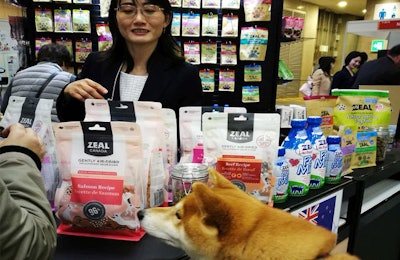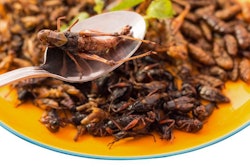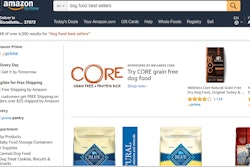
Deeply embedded in Japan's culture is the concept of “less is more.” A guiding philosophy that has defined much of Japan's way of life, it has its limitations in the business world.
In Japan right now, dog breeders are a dying breed, which causes the supply of puppies to plummet. It is a serious concern among pet food companies, which are also bracing for the consequences of Japan's greying and rapidly shrinking human population.

Japan’s older population is being encouraged to own pets in order to promote their health and to grow the pet food market. | Photo by Alma Buelva
Challenges of breeder laws to Japan’s pet population
Hisashi Ishiyama, chairman of Japan Pet Food Association and vice president of Mars Japan, said he believes they must address the supply and demand issues affecting their industry to ensure its long-term growth.
“I'm very much worried,” he said when asked about the impact of Japan's thinning population on pet ownership. “The issues are both on the demand and supply sides, which we have to increase” by changing current mindsets.
On the supply side, Ishiyama said he squarely blames Japan's Animal Welfare Law for the ongoing exodus of Japanese dog breeders. Enacted in 1973, the law was revised in 2005 and though it did not mention what constitutes a breeder, Ishiyama said it is the government's view that a commercial breeder is one who breeds only two puppies or twice a year.
“What happened was those who used to breed more than that disappeared,” Ishiyama said, and the trade was essentially reduced to a hobby. “The breeders don't want to bother anymore, so supply went down to half while the price of puppies went up three times, with pet shops now charging US$3,000 for a puppy,” he said.
From over 25,000 dog breeders who produced about 107,225 puppies before 2005, Japan's total registered breeders is now down to 12,603 of which only 9,500 are active, said Ishiyama.
“This is bad for us,” he said. “No other country in the world defines a breeder by the number of puppies bred (annually). Other countries define them by the number of times they breed dogs. Our tight definition of ‘breeder’ doesn't consider the biological differences between large dogs that could have 12 puppies (in one pregnancy) and small dogs that could probably have only two puppies a year.”
Dog ownership trends in Japan
And small dogs are what most Japanese would-be pet owners want. Their love for everything “kawaii” and the fact that living spaces tend to be small explain why most Japanese prefer small dogs. Pet food vendors said Shih Tzus, Dachshunds and Pomeranians are the classic favorites, while toy Poodles, Chihuahuas and small mixed breeds are also popular.
Dog ownership in Japan has been on a steady decline. From 9.7 million pet dogs in 2014, Japan's current dog population is 8.9 million. As of October 2018 Ishiyama said he estimates that 88% of the dogs are small purebreds. Supplying Japanese homes with these types of dogs could get harder in the near future as breeders get older. Ishiyama said the average age of a local breeder is 65 and only 38% have heirs interested in taking over the business.
Promoting pet ownership
On the demand side, Ishiyama said they must vigorously promote pet ownership among all age groups, including seniors who think they are too old to have pets. Doing so will not only beef up demand for pet food, it could also help promote longevity among Japanese people.
Recent data from the United Nations estimates Japan's population to be nearly 127 million. Today, those over 65 years old account for 28% of the population. By 2055, the silver generation will make up 41% of the total population and in 2060 the country is forecast to register a 20% population decline. For Japan's pet food industry to keep on growing despite the population crisis, it will need as many people as possible to own pets.
“The biggest mass of pet owners here exists among people in their 40s and 50s for cats, while a large number of people in their 50s and 60s own dogs,” said Ishiyama. “There are tons of studies in the west about the health benefits of having pets when you are older.”
Yoshio Koshimura, honorary chairman of Japan Pet Food Association and ex-president of pet food manufacturer Hills-Colgate Japan, shares a similar view. He said studies have shown that several years can be added to the life a person who simply walks with dogs.
Koshimura acknowledged that the desire to have pets is fast declining as more Japanese live alone, stay single and grow old. He said aside from promoting pet ownership to people from age 20 to 70, Japan also has a beta project to build a utopia or society where people, particularly the old, can live with pets.
Both officials of the 66-member Japan Pet Food Association said they are also hopeful that Japan's immigration programs will attract more visitors who will stay for good. Last year, 32 million visitors came to Japan, generating ¥15 trillion (US$136.4 billion) business. This year and in 2020, 35 million and 40 million foreigners, respectively, are expected to come to Japan, and the industry hopes many will stay and work and have pets.
Small is big
For 2018, industrial and marketing research firm Fuji-Keizai Group forecasts Japan's total pet market, which includes pet food, pet care and pet living care products, to be worth ¥446 billion (US$4 billion), excluding internet sales. Pet food takes 73% of the market at ¥326 billion (US$2.92 billion).
Ishiyama said that among major markets in the world, Japan has one of the highest calorific penetration of around 95% for cats and dogs. Simply put, calorific penetration is determined by the energy requirement of each dog or cat in a household and the percentage or how much of it is supplied by pet food, Ishiyama said.
Leading the eating of all that dog food in Japan are their small breeds and senior dogs who drive up sales for semi-moist dog food, snack and treats, and age-appropriate dog food.
For years now, the Japanese have been known to have the longest life expectancy in the world and their pet dogs seem to enjoy the same. Koshimura, who is also chairman of Human & Pet Happiness Creating Association, said 56% of dogs in Japan are senior dogs which, on average, live for 14.29 years, especially the small breeds. The longer they live, the more sales and income pet food companies will have.
Jerky products are particularly popular in Japan where it is common for small pet dogs to eat it not just as a treat, but as a full meal.
“Jerky is initially a snack and an incomplete diet,” said Ishiyama. “But because a large number of people start giving jerky as a meal, the industry turned it into a full meal for small dogs. So, people in Japan can keep feeding jerky to their small dogs and not have a nutritional problem. But for big dogs, jerky is not enough and it would also cost too much.”
As a result, Japan's pet food market is flooded with an assortment of jerky made from different kinds of animals. A company called be-Natural is offering jerky made from kangaroo, turkey, venison, goat and salmon on top of the standard chicken or beef jerky.
Hirofumi Fujiwara, managing director of be-Natural, said his kangaroo jerky is selling well in Tokyo and Osaka. “It is imported from Australia and considered a high-end meat product for pet food,” said Fujiwara. “Last year, we made ¥300 million (US$2.69 million) in sales.”
Kenji Watanabe, general manager for Natural Horse, also said the company is enjoying brisk sales of its jerky made from different parts of wild horses from Mongolia.
“The horses we use are low in fat but high in protein,” said Watanabe. “We have jerky made from the horse's heart, hooves, ribs, neck and ankle. We have eight horse jerky varieties plus two made from pig parts.”
Each bag of Natural Horse jerky costs from ¥598 to ¥980 (roughly US$9), but cost is not an issue among Japanese pet owners who are more conscious about the quality of the pet food they buy. Even if they buy premium and expensive dog food, the cost can still be kept at a minimum because they don't need a lot to feed their small eaters, said Ishiyama.
Breeders, on the other hand, usually buy imported brands of specialty dog food with a higher protein content.
Japan has a Pet Food Safety Law promulgated in June 2008 that laid down standards, specifications and responsibilities of manufacturers, importers and wholesalers to ensure the health of pets in their country. Ishiyama said since this law was enacted, their pet food industry has not had any problems.
Despite having a very mature pet food market, the Japanese pet industry still has growth potential and will keep contributing to the country's GDP growth.
“On the supply side, we hope to see a loosened definition of breeder so there will be more breeders and supply of puppies will increase,” said Ishiyama. “From the demand side, I can't do anything with the population decline, [so] the only thing I can do is to shift mindsets by selling the benefits of pets to the entire population.”















